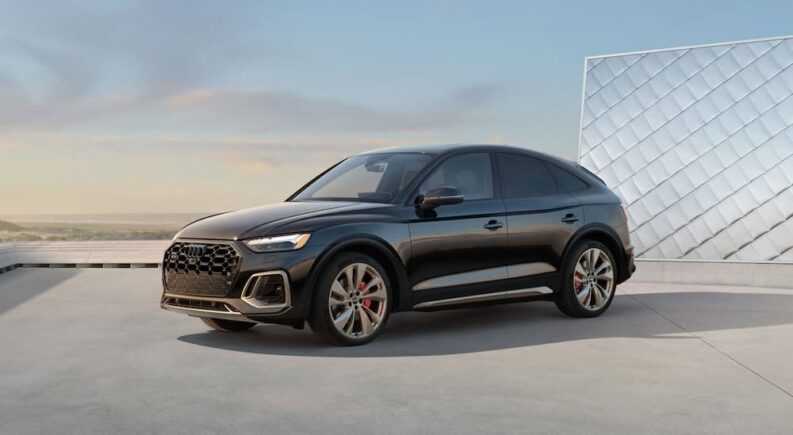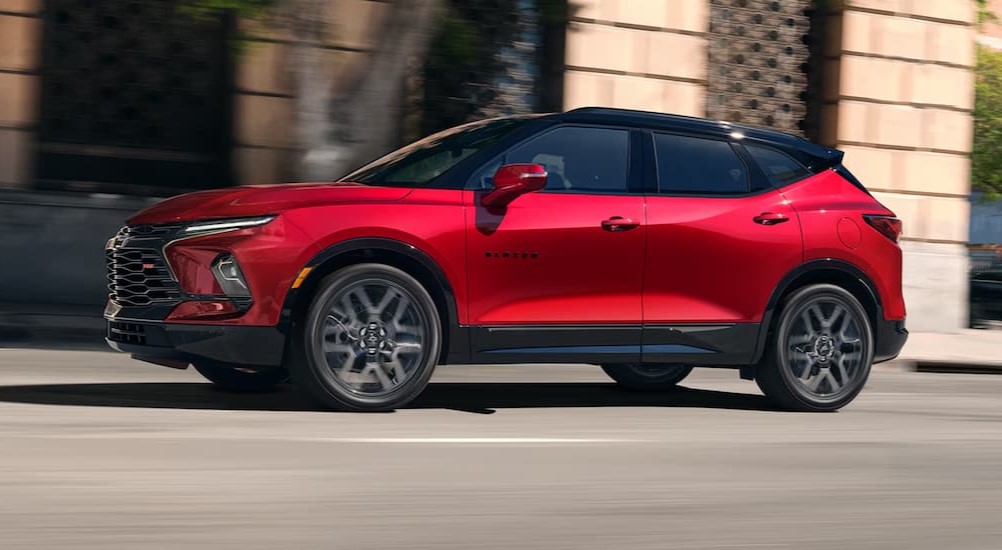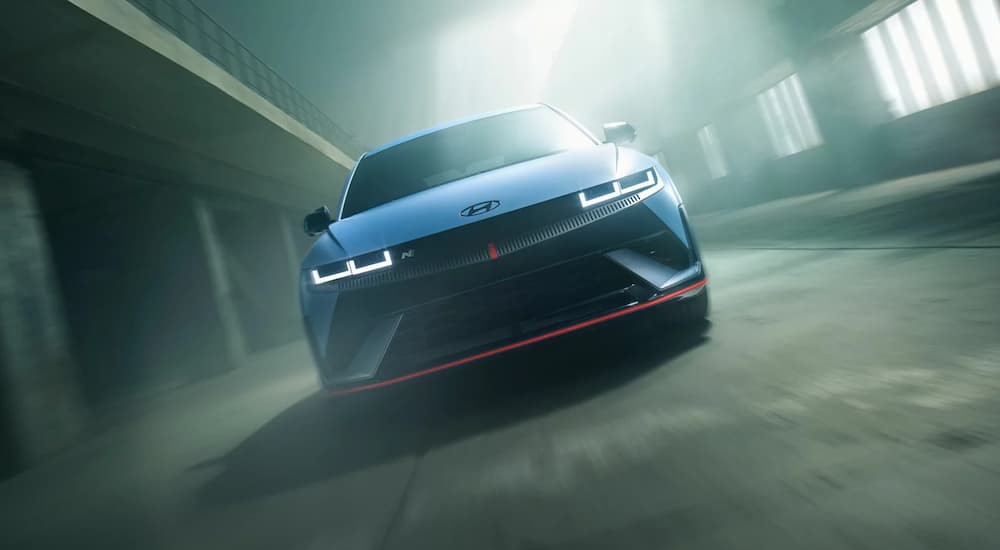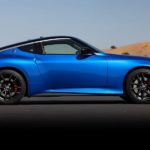SUVs have sure come a long way from the boxy, utilitarian models that once dominated the market. Looking for an opulent ride that can go toe-to-toe with any luxury vehicle on the market? There’s an SUV for that. The same goes for off-road ability, towing prowess, and, of course, performance. If you’re a driver who has become accustomed to living life in the fast lane, it can be difficult to bid farewell to your sporty coupe, but a new generation of performance-focused SUVs is making it easier than ever.
Boasting brawny engines, sport-tuned suspensions, and quick zero-to-60-mph times—not to mention cargo space, utility, all-wheel drive, and a full arsenal of comfort and convenience features—these high-performance SUVs are a tempting choice for a sports car enthusiast who’s looking for a practical ride that still prioritizes the driving experience. In order to steer such drivers in the right direction, I’ve compiled a short list reviewing three of the best performance-focused SUVs on today’s market. From an EV and Camaro-inspired Chevy to an undisputed leader in the compact performance segment, strap in and learn just how thrilling some of today’s SUVs can be.
#1 – Audi SQ5
The Audi SQ5 takes everything there is to love about the Q5 luxury compact and kicks it up another level. First debuting in 2013, the SQ5 comes complete with 21-inch wheels, paddle shifters, power-adjustable leather sport seats, carbon fiber inlays, and, most importantly, a significant upgrade under the hood.
A turbocharged 3.0L V6 delivers all the power a driver could ask for, with 349 hp and 369 lb-ft of torque to its name. Add in an eight-speed automatic transmission with torque vectoring and Audi’s famed Quattro all-wheel drive system, and it’s easy to see how the SQ5 has earned a reputation as one of the standouts in the niche segment. The Quattro AWD system can send 85 percent of the engine’s considerable torque directly to the rear wheels, which offers some significant benefits in terms of performance, acceleration, and handling and allows the SQ5 to speed to 60 mph in 4.7 seconds.
The SQ5 is also notable for its sheer customization potential. Audi has provided two SQ5 variants to choose from: the standard design and a flashy Sportback model that features a sloping roofline, angled C-pillar, lower ride height, and unique bumper design. The Sportback certainly matches the SQ5’s robust performance credentials, but those seeking a little extra cargo room might want to opt for the basic model, which features 25.9 cu.ft. of storage space to the Sportback’s 24.7 cu.ft. It’s a pretty modest difference, and the Sportback will probably be hard to pass up for any driver who’s trying to turn some heads.
The optional S Sport package is the icing on the cake, introducing an adaptive air suspension and a performance differential to the equation. The SUV is also every bit the luxury vehicle with a plush interior that includes quilted-leather upholstery, a heated steering wheel, three-zone automatic climate control, and a host of contemporary tech features like Apple CarPlay and Android Auto capability and Audi’s Virtual Cockpit Plus digital gauge display.
The SQ5 might not offer as rigid and responsive of a ride as you’d find on some of the competition, but that might actually work in the SUV’s favor. While the precise handling and engaging feel of a sport-tuned suspension might be nice on shorter jaunts, it can have a real impact on comfort when you’re just trying to get through your daily commute or heading out on a weekend road trip with the family, The SQ5 manages to find a satisfying balance between performance and practicality, which isn’t always the case on these performance-focused models.
#2 – Chevy Blazer RS
The original Chevy Blazer has certainly lived up to its name, boldly exploring new territory and blazing the trail for the SUV segment since its debut in 1969. The SUV reemerged as a midsize crossover in 2019, slotting in nicely between the compact Equinox and three-row Traverse in the Chevy lineup. While the Blazer is built on the same platform as its GM cousin, the Cadillac XT5, it’s the influence of another Chevy model that really sets the Blazer apart from the crowd. In an attempt to infuse the Blazer crossover with an aggressive, performance-inspired feel, Chevy engineers turned to the brand’s most iconic muscle car: the Camaro.
It’s hard to ignore the Camaro’s influence when you first set eyes on the Blazer’s low roofline, high waistline, 21-inch High Gloss Black wheels, and decidedly unique front and rear fascias, which feature the sort of sporty aesthetic that wouldn’t be out of place on the low-slung coupe. This clever Camaro mimicry carries over to the interior, where drivers will find red contrast stitching and circular HVAC vents that will look familiar to any fans of the legendary muscle car.
Of course, style only gets you so far, so how does the Blazer stack up where it really counts? If you’re looking at the RS trim, the answer is pretty darn well. While the crossover’s other trims come standard with a turbocharged 228 hp four-cylinder engine, the RS ups the ante with a 3.6L V6 that puts out some 308 ponies. This ample engine, along with upgraded steering and some generous suspension tuning, means the Blazer RS is never short on excitement. The Blazer’s V6 engine provides plenty of acceleration for a midsize model, allowing the crossover to speed from zero to 60 mph in just over 6.5 seconds, an impressive number that makes the RS the must-have trim for any driver trying to add a kick to their daily commute.
Styling and performance aside, it’s the Blazer RS’s low starting price that makes the most compelling case for scheduling a test drive. Chevy has managed to give drivers an engaging—and occasionally even thrilling—ride while keeping the crossover’s price below $45,000. The RS represents a real bargain on today’s market and rounds out its resume with 64.2 cu.ft. of cargo space and a full suite of tech and safety features, including a 10.2-inch infotainment display, ambient interior lighting, and all the expected advanced driver-assistance system (ADAS) offerings.
#3 – Hyundai IONIQ 5 N
If you’re in the market for an SUV that can replicate the excitement and performance of a sports car, it may be time to start searching for an all-electric model. The instant torque afforded by electric motors provides a foolproof recipe for fun, along with some of the best zero to 60 mph times you can imagine. Take the Hyundai IONIQ 5 N, for example. The high-performance version of the regular IONIQ 5 features a dual-motor, all-wheel drive powertrain that gives drivers 601 hp to play with. That’s a significant improvement over the 320 hp found in the AWD version of the regular IONIQ 5, but the fun doesn’t stop there. Engaging Hyundai’s unique N Grin Boost feature allows drivers to access a brief boost that’ll up the output to a rubber-burning 641 hp. Performance figures can almost start to get a little abstract when you edge above the 500-horsepower mark, but the IONIQ 5 N’s 3.25-second zero to 60 mph time provides plenty of context.
While some performance-focused SUVs trade purely on their power, Hyundai has created a well-rounded racing machine in the IONIQ 5 N. The crossover’s all-wheel drive system can seamlessly send the power where it’s needed most with a multitude of dedicated drive modes that can provide a decidedly different driving experience every time you step behind the wheel. Eco mode maximizes efficiency, allowing the IONIQ 5 N to make the most of its 221-mile range without skimping on performance. Normal mode provides a versatile driving experience, while Sport mode gives the EV a chance to flex its muscles.
These three drive modes would probably be enough to satisfy the needs of even the most thrill-seeking driver, but Hyundai hasn’t stopped there. Exclusive to the IONIQ 5 N, N mode pulls out all the stops to provide drivers with a ride they won’t soon forget. N mode sharpens the EV’s throttle response, stiffens the suspension, and even lets owners adjust various settings like torque distribution, steering weight, and powertrain response to create a one-of-a-kind driving experience.
Testing an EV’s performance potential can be an uncanny experience due to the lack of accompanying engine noise, but Hyundai has engineered around this problem by packing the IONIQ 5 N with N Active Sound+ to give the SUV a satisfying growl to match its blistering performance. A simulated gearshift feature performs a similar function, providing a satisfying tactile response when you engage the IONIQ 5 N’s wheel-mounted paddle shifters. Additional Endurance and Sprint modes determine how quickly the battery is drained to meet various driving applications, with Endurance extending the EV’s range and Sprint allowing you to rapidly drain the lithium-ion pack when you need to test your limits.
Not sold on the IONIQ 5 N or just looking for something that better reflects your personal style? Drivers have a readymade alternative in the closely related Kia EV 6 GT. While the EV6 GT is built on the same platform as the IONIQ 5 N, it differs in some important ways that could give it the edge once you’ve narrowed down your search to the two models. The EV6 boasts the same 641 hp but is missing some of the more hard-core performance features. Otherwise, the two EVs are pretty well matched in terms of cargo room, reliability, tech, and safety features, so it ultimately comes down to which model catches your fancy.
A Sports Car Substitute
There’s no substitute for the sort of high-octane driving experience that a sports car can offer, but today’s performance-focused SUVs are certainly closing the gap. These three models prove just how entertaining the SUV segment can be when you opt for the right vehicle, whether it be the Audi SQ5 with its Quattro AWD system and optional Sportback variant, the value-packed Blazer RS that maximizes cargo space with its roomy, midsize design, or the all-electric speed demon that is the IONIQ 5 N.
These SUVs manage to seamlessly blend performance and practicality into a single package that’ll provide all the cargo room and amenities you’ll need for a busy day around town while still giving you the ability to put the pedal to the metal with up to 641 hp on tap. Best of all, they won’t break the bank. All three models mentioned above can be had for under $70,000, which is a pretty impressive figure when you consider their pure performance potential. If you’re looking for a daily driver that won’t break the bank—or your back every time you go to climb into the cabin—a performance crossover might be just the ticket.






